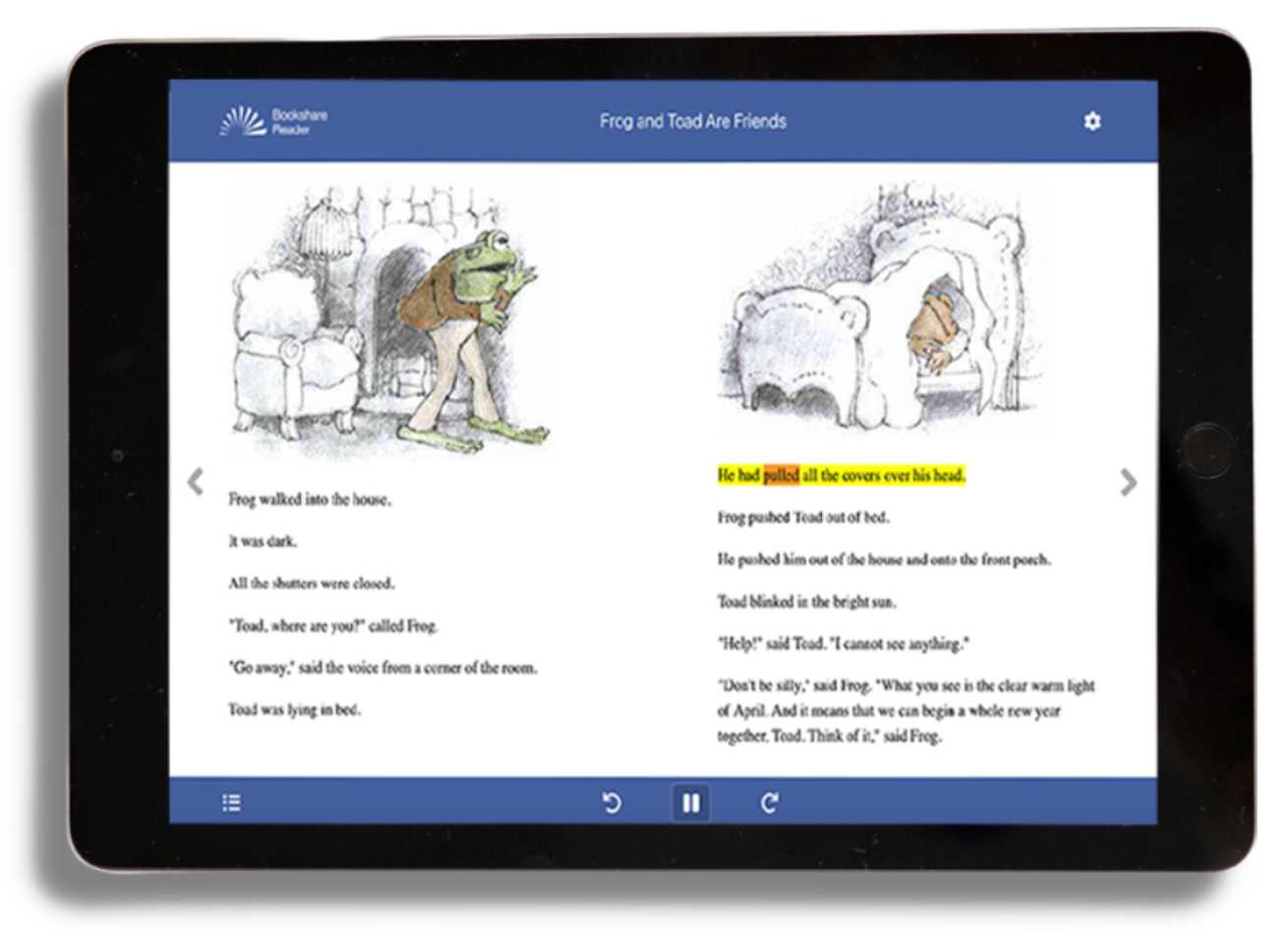How Bookshare’s assistive reading features help students with dyslexia, visual impairments, and other learning differences
Bookshare has empowered over a million learners around the world to read in ways that work for them. This includes students who have been excluded from equal learning opportunities due to learning differences like dyslexia, blindness, and physical disabilities.
Bookshare ebooks (1.3 million titles and counting) come in multiple accessible formats – audio, large font, braille – and can be read with powerful assistive reading features that allow students with learning differences to learn in ways that work for them. How specifically do these features support diverse learners? What is the evidence? Here are some of the research findings that support using Bookshare with students who struggle to read traditional books.
Synchronized audio and highlighting
With Bookshare, students can hear words read aloud and follow along with highlighted text that is synchronized with the audio. This creates a rich and engaging multimodal learning experience that has been proven to assist low-level readers and students with dyslexia.
In a study with children in grades 3 to 5 (Gerbier, Bailly, & Bosse, 2018), researchers identified potential benefits of synchronized reading while listening, especially for students with lower reading levels. These include:
- Preference for reading with synchronized audio and visual
- Increased engagement and attention to the currently heard word.
In another study (Ikeshita, Yamaguchi, Morioka, Yamazoe, 2018), researchers observed that children with developmental dyslexia found it easier to read when:
- Audio was synchronized with text highlighting
- Particular colors were used to highlight sentences and words, i.e. blue and yellow.
Font size and spacing
Learners can adjust text size and spacing in every Bookshare book.
In a study with people with and without dyslexia (Rello, Baeza-Yates, 2017), researchers found that larger text and character spacing lead participants to read significantly faster. Specifically, they observed:
- Larger font sizes significantly improve readability, especially for people with dyslexia (ranging from 18 to 24 points)
- Larger character spacings (up to þ7 to þ14 %) significantly improve readability for people with and without dyslexia
- Regarding preferences, both groups found texts with no gray scales and with larger font sizes significantly more readable.
In another study with children with dyslexia (Zorzi et al. 2012), researchers made the following observations of extra-large letter and line spacing:
- Substantially improved text reading performance on the fly (without any training)
- Extra-large letter spacing between letters helps children with dyslexia that are abnormally affected by crowding.
In a separate study (Martelli, Di Filippo, Spinelli, Zoccolotti, 2009), researchers found that students with dyslexia in the sixth grade needed larger letter spacing to identify letters than do students without dyslexia.
Summary
These are just a few of the benefits highlighted by a growing body of research on features that can help students to read and learn. We will continue to share evidence-based research to demonstrate the benefits of reading with Bookshare, as well as the many user stories that bring these benefits to life.

